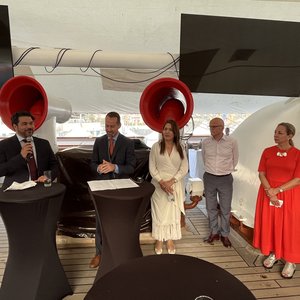A new study has found that if current aquaculture and agriculture practices remain unchanged into the future, wild forage fish populations likely will be overextended by the year 2050, and possibly sooner — even if all stocks were fished sustainably. The team, which includes researchers from the University of California, Santa Barbara, and the University of Washington, found that making sensible changes in aquaculture and agriculture feed production would avoid reaching that threshold.
“Aquaculture has a lot of potential to keep feeding the future planet, but we do probably need to make some changes for sustainability,” said co-author Tim Essington, a UW professor of aquatic and fishery sciences. “We are in a position to start thinking about different scenarios and how we want to invest in technological advances to shape how the aquaculture field is run.”
The study authors used computer simulations to examine five different ways the aquaculture, fisheries and agricultural sectors could change to take the strain off forage fish. They found that eliminating their use in food for farmed carp and other freshwater fishes produced the most savings of forage fish over time, compared with a business-as-usual model. Those fish do not have to eat other fish in the wild to survive, but producers feed them fishmeal and oil simply because it helps them grow better and faster.
Also beneficial was a scenario that removed forage fish from feed for pigs and poultry — a trend that has been occurring over the last few decades already. Additionally, their projections indicated that salvaging the unused parts from farmed and wild fish in China and processing these trimmings into fishmeal and oil would help sustainably stretch, but not completely solve, the protein content of forage fish.
When modeling the various scenarios, the researchers looked at the biggest consumers of forage fish, while also considering the practicality of removing this food source from the diets of various species. For example, cutting forage fish from farmed salmon and tuna diets is harder because these fish hunt other fish in the wild and rely on more animal protein to survive. Taking it out of carp and pig diets, though, is less detrimental to the growth of these animals.
“There are very clear steps that can be taken to mitigate the pressure from aquaculture, but if the whole world ate a little more fish, then that degrades the savings you get from these mitigating measures at the levels we assessed,” Froehlich said. “These unknowns really emphasize how important alternative feed sources are for the long-term sustainability of aquaculture.”
Growing and harvesting algae, insects and seaweed are all options being tested and considered as alternative feed sources for aquaculture and livestock animals, reducing the strain on forage fish. Crops such as soy are among the largest alternatives right now for both livestock and farmed seafood.
The study is published online in Nature Sustainability










